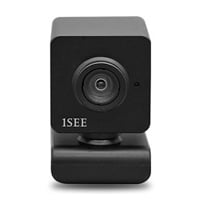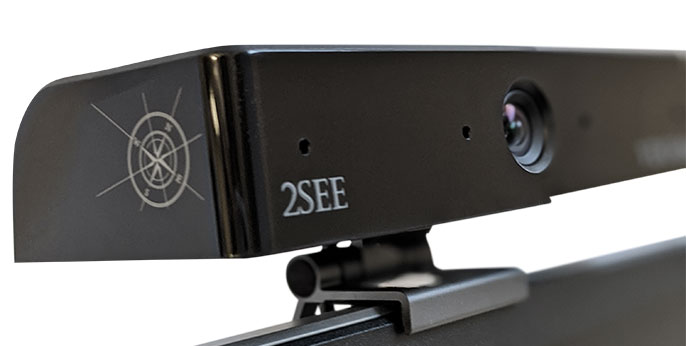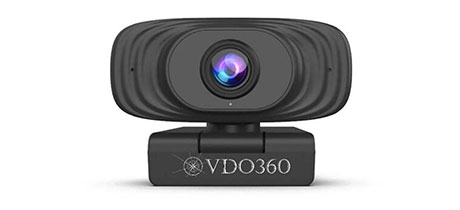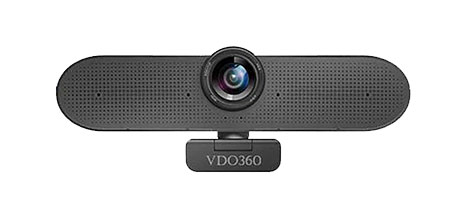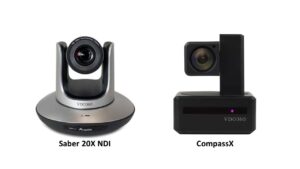I mean, it would be epically cool to roll up in that head-turning ride, but it’s kind of overkill when all you needed was milk, eggs, and a couple of ramen packages.
Having been in the video streaming and conferencing space for the better part of 25 years, I get asked many questions about cameras, microphones, and the equipment necessary to effectively host a video call. This has been especially true lately, as 4K cameras (Ultra HD) are becoming more commonplace. The question then becomes, do I really need a 4K camera for my video call? Before we go there, let’s look at the end-to-end components that allow us to make a video call.
With the introduction of powerful, user-friendly cloud-based video call platforms like Zoom, Lifesize Cloud, Blue Jeans, Teams, and others, the conversation has shifted away from complicated technical details and toward hardware. We’re talking about cameras, microphones, headsets — that kind of thing.
Having worked from home for the past 15+ years, I videoconference on average at least ten times a week, and sometimes it seems like I’m always on a call. Safe to say, when the shift to remote work happened, I was already a seasoned veteran. Here are my top tips for making sure you get the equipment you need without spending too much.
The Minimum Setup for Video Calls

What’s the bare minimum for a successful video call? Most laptops come with an internal webcam, microphone, and speakers. In theory, that’s all you need to make a Zoom call work; however, you’ll likely be disappointed in the quality of your call. It might be fine in a quiet environment for a quick one-on-one call but fall apart for more complex situations. We’re talking about any meeting that lasts more than 15 minutes, has other people around you, is in a noisy room, or includes multiple participants.
Audio First

While video is an essential part of a video call, it’s actually the least of your worries if you’re using a poor-quality microphone and speaker setup, unless, of course, you know how to read lips. And the other people you’re trying to talk to also know how to read lips! People are willing to put up with poor video, but audio issues will kill your call.
I primarily work in a private workspace, so I don’t have to worry about keeping my voice down for my co-workers, so I use an external speaker rather than a headset most of the time. External speakers won’t fly if I’m in a shared location, such as visiting a friend or in the airport. In that scenario, I usually revert to a set of ear pods as they are light, easy to carry, and do a decent job of blocking out the ambient noise around me. I happen to use a set from an Apple iPod that has a microphone built into the cord, but most any brand will do. This is a cheap and easy solution for on-the-go audio. If I had to use this setup every day in a more permanent workspace, I would opt for a better headset that was higher quality, over-the-ear, and more comfortable. Whatever you decide, be sure to consider both the audio input (microphone) and the audio output (speaker).
Video: Integrated Cameras

It’s all about limited real estate and pixels. The integrated camera in a laptop is marginal at best, especially if it’s just a standard laptop not designed for daily video call use. These are typically small cameras due to the size limitation of the laptop and the amount of real estate necessary to mount a camera in the screen bezel. The same is true for integrated speakers. They’re typically small and underpowered. In short, the components that come with your laptop are good in a pinch but not suitable for daily videoconferencing use.
Some integrated cameras might advertise that they support High Definition (HD) video, but beware – many manufacturers consider 480p resolution as HD, which it technically is. The generally accepted industry standard for minimum HD resolution is 720p. I’ve also found out the hard way that the integrated HD camera lens itself has a lot to do with the overall video quality. The lens might be less than 1 megapixel or even less than ½ megapixel, and that results in a pretty fuzzy image.
Ok. What the heck is a megapixel, and why do I care? It’s a measurement that indicates the size of the camera image and the camera’s resolution. Higher megapixels aren’t necessarily better. A camera with a lot of megapixels doesn’t always help increase your video output. Small pixel structures require high-quality optic imaging in the form of a high-resolution lens. Without it, you end up with blurred images that have tons of pixels, but poor structure details. A proper balance between what is known as pixel pitch (density), pixel size (for light capture), and lens selection (sweet optics) is the key. In the end, most integrated cameras are there only to check a box in a feature table.
Do I Want an External Camera Upgrade?
An external USB-capable web camera is an excellent upgrade investment, and these days there are plenty to choose from that support the 1080p HD resolution you’re looking for. When making your decision, be sure the webcam is USB capable; most laptops can’t connect directly to an HDMI or SDI camera and need a USB adapter. A quality, basic USB webcam is just that – a camera and nothing more. These are perfect if you have a microphone/headset or use an external speaker/microphone system for your video calls.
I’ll Take a Side of Premium Audio, Please
The next step up from a basic webcam is one that has an integrated microphone, which is very useful if you have a desktop computer and a good set of external speakers. This lets you move around your workspace, which is especially helpful for training and education. When selecting a webcam with a microphone, be sure to look for a model with a range of at least 4 meters (12 feet) so that you can freely walk around your workspace and people on the other end of the video call can still hear you loud and clear.
Putting It All Together
The ultimate no-hassle solution is an integrated Unified Communication (UC) device that bundles the camera, microphone, and speaker assemblies in a single device. These are handy, all-in-one systems that come in a range of sizes from 6 to 20 inches and can clip onto your laptop or external monitor. These are popular cameras for working in a huddle space or any small meeting room where two or more people participate in the video call. Be sure to consider portability. Some UC devices are as small as 6 inches, while others are less portable at 20 inches or more.
What About that 4K Option?
So let’s finally talk about the big Ultra HD 4K video call question. Today’s most popular video call platforms, like Zoom or Teams, support a maximum of 1080p call resolution, and many default to 720. This is for a variety of reasons – bandwidth utilization, local laptop CPU power, actual laptop power consumption (think of running on battery alone), and even the cloud server strength of your video platform. The higher the resolution, the harder that video call server has to work, and it also consumes more bandwidth as the resolution increases. Most laptops have no problem with 480p or 720p video calls; however, some might use a fair amount of CPU power at 1080p (Full HD), and pushing that to 4K (Ultra HD) could bring your laptop to its knees.
In the End
Does buying a 4K webcam for video calls today make sense? It depends. If you’re someone who only uses their webcam for Microsoft Teams, Zoom calls, or streaming online, then a 1080p webcam is more than adequate. Your expensive 4K output would likely be downscaled anyway by the video call service. Will a 4K Ultra HD camera make sense in the future? Absolutely. When commercially available 4K video call platforms are in widespread use, you’ll find you need 4K to keep up. Will that happen soon? Probably not. In short, look for a high-quality 1080p Full HD camera that offers excellent optics, USB connectivity, and is easy to use. Depending on your daily needs, you might want to get one with a microphone or possibly a UC device that includes a speaker as well.


